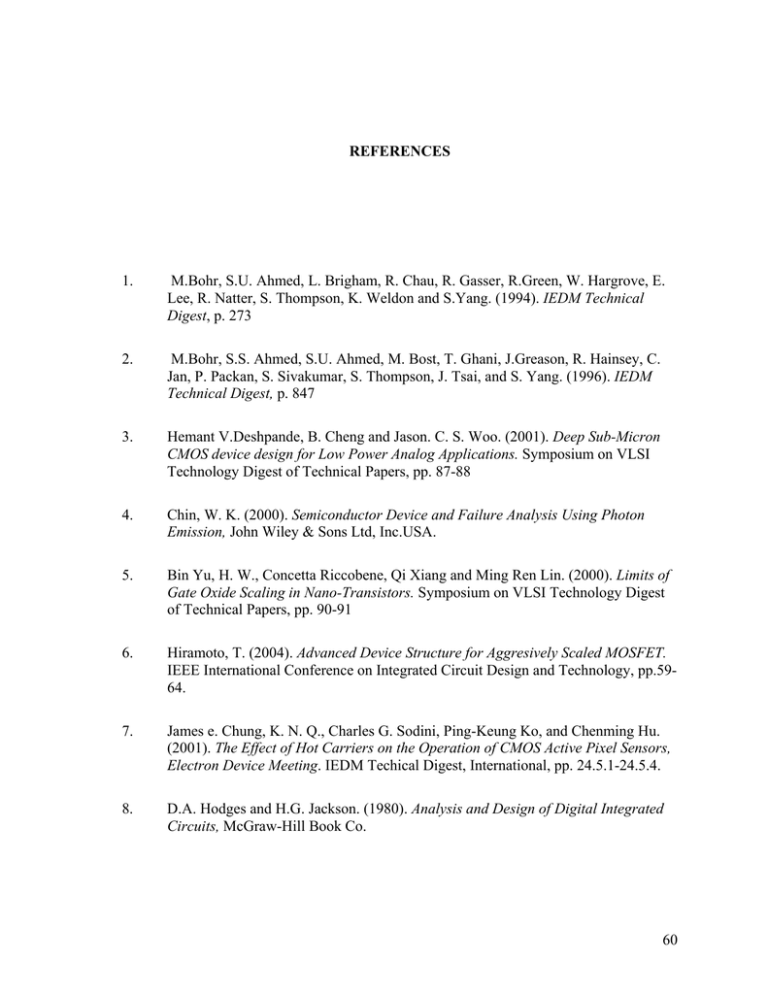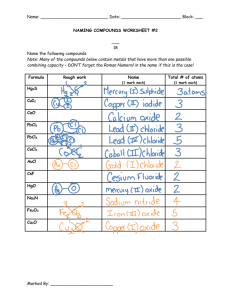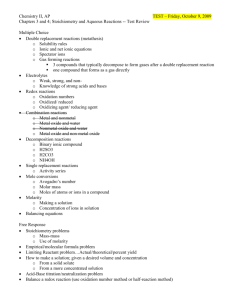
REFERENCES
1.
M.Bohr, S.U. Ahmed, L. Brigham, R. Chau, R. Gasser, R.Green, W. Hargrove, E.
Lee, R. Natter, S. Thompson, K. Weldon and S.Yang. (1994). IEDM Technical
Digest, p. 273
2.
M.Bohr, S.S. Ahmed, S.U. Ahmed, M. Bost, T. Ghani, J.Greason, R. Hainsey, C.
Jan, P. Packan, S. Sivakumar, S. Thompson, J. Tsai, and S. Yang. (1996). IEDM
Technical Digest, p. 847
3.
Hemant V.Deshpande, B. Cheng and Jason. C. S. Woo. (2001). Deep Sub-Micron
CMOS device design for Low Power Analog Applications. Symposium on VLSI
Technology Digest of Technical Papers, pp. 87-88
4.
Chin, W. K. (2000). Semiconductor Device and Failure Analysis Using Photon
Emission, John Wiley & Sons Ltd, Inc.USA.
5.
Bin Yu, H. W., Concetta Riccobene, Qi Xiang and Ming Ren Lin. (2000). Limits of
Gate Oxide Scaling in Nano-Transistors. Symposium on VLSI Technology Digest
of Technical Papers, pp. 90-91
6.
Hiramoto, T. (2004). Advanced Device Structure for Aggresively Scaled MOSFET.
IEEE International Conference on Integrated Circuit Design and Technology, pp.5964.
7.
James e. Chung, K. N. Q., Charles G. Sodini, Ping-Keung Ko, and Chenming Hu.
(2001). The Effect of Hot Carriers on the Operation of CMOS Active Pixel Sensors,
Electron Device Meeting. IEDM Techical Digest, International, pp. 24.5.1-24.5.4.
8.
D.A. Hodges and H.G. Jackson. (1980). Analysis and Design of Digital Integrated
Circuits, McGraw-Hill Book Co.
60
9.
Wolf, S. (1995). Silicon Processing For the VLSI Era, Volume 3-The Submicron
MOSFET, Lattice Press, Sunset Beach, California, USA.
10.
Ren-Ji.C, Sah C.T.(June 1983). Two –Dimensional Numerical Analysis of the
Narrow Gate Effect in MOSFET, IEEE Transaction on Electron Devices, Vol.Ed30, no.6
11.
Hess, K. (2000). Advanced Theory of Semiconductor Devices, IEEE Press
Marketing, 3 Park Avenue, New York, USA.
12.
Qiang Chen, K. A. B, Evans M.Harrell and James D.Meindl. (2003). Double
Jeopardy In the Nanoscale Court?. IEEE Circuits and Devices Magazines. pp.28
13.
Shur, M. (1996). Introduction to Electronic Devices, John Wiley & Sons Ltd. Inc.
USA.
14.
James e. Chung, K. N. Q., Charles G. Sodini, Ping-Keung Ko, and Chenming Hu.
(2001). The Effect of Hot Carriers on the Operation of CMOS Active Pixel Sensors,
Electron Device Meeting. IEDM Techical Digest,International, pp.24.5.1-24.5.4.
15.
E. P. Vandamme, P. J., and L. Deferm. (August 1997). Modeling the Subthreshold
Swing in MOSFET's. IEEE Electron Device Letters, 18(8).
16.
C. Hu. (1993). Future CMOS Scaling and Reliability, Proceedings of the IEEE. 81,
p.682
17.
Hayes.J (1980).MOS Scaling, Proceedings of the IEEE.
18.
J. R. Brews, (1979). IEEE Trans. Electron Dev, ED-26(11), p1696
19.
N. Kotani and S. Kawazu (January 1979) Solid State Electronics, 22, 63
20.
C.Fiegna et al. (June 1994). Scaling the MOS Transistor below 0.1µm:
Methodology, Device Structures, and Technology Requirements, IEEE Transactions
on Electron Devices, Vol. 41, No.6
21.
K.E. Kroell, (Sept 1973). Geometry effects on field effect transistors, European
Solid-State Device Res.Conf.(ESSDERC), Munich,German
61
22.
M.C. Jeng et al. (1987).Performance and reliability of deep-submicron MOSFETs,
Tech. Dig. IEDM, p.710
23.
B.Agrawal,V.K.De and J.D. Meindl, (1993). Opportunities for Scaling FET’s for
Gigascale Integration (GSI), in Europ.Solid State Device Res. Conf, p. 919
24.
R. Yan,A. Ourmazd, and D.Jeon. (Dec 1991). Scaling the Si metal-oxidesemiconductor field effect transistor into the 0.1µm regime using vertical doping
engineering. Appl. Phys. Lett.,pp. 3315-3317
25.
S.Thompson et al. (1998). MOS Scaling: Transistor Challenges for the 21st
Century, Intel Technology Journal
26.
A.Agarwal (2003) Leakage in Nano-Scale Technologies: Mechanism, Impact and
Design Considerations, West Lafayette, USA
27.
Xiao, H. (2001). Introduction to Semiconductor Manufacturing Technology.
Pearson, Prentice Hall.
62
APPENDIX
APPENDIX A
1.
MOSFET Fabrication Process Technology [27]
1.1
Self aligned gate process by using single Poly Double Metal 0.5um
Polysilicon is the most commonly used material to form gates and local
interconnections. This is because polysilicon has high temperature stability, which
is necessary for the self-aligned source/drain implantation and post implantation
high-temperature anneal process. Single Poly Double Metal 0.5um normally is
deposited with the LPCVD process, either SiH4 or SiH2Cl2 can be used as the
silicon precursor. Deposition temperature is from 550°C to 750°C, and it can be
heavily doped with boron, phosphorus or arsenic, either in situ during the deposition
or ex situ by an ion implantation process. Figure 5.0 illustrates the self-aligned gate
process for making a NMOS transistor.
Figure 5.0: Self-aligned gate transistor formation
I
1.2
Locos isolation
Local oxidation of silicon (LOCOS) has been used in IC production since
the 1970s.It has better isolation effect than the blanket field oxide .One advantage is
that the silicon dioxide is grown after the channel stop implantation. The field oxide
layer is self-aligned with the isolation doping area. By using the channel stop
implantation; one can keep the same value of field threshold voltage, VT while
decreasing the field oxide thickness. The thickness of the LOCOS oxide is 5000 to
10, 000 Å. The LOCOS isolation process is listed and illustrated in Figure 5.1.
Figure 5.1: LOCOS Isolation Formation
LOCOS process uses a thin layer of oxide (200 to 500Å) as the pad layer to
buffer the strong tensile stress of the LPCVD nitride. LPCVD silicon nitride is used
as the oxidation mask, which allows only the thick silicon dioxide, called LOCOS,
to grow at the designated area. The activation areas where transistors will be built
are covered by nitride and do not grow oxide. Pad oxide is needed to relieve the
strong tensile stress of the LPCVD nitride. Plasma etch with fluorine chemistry is
usually employed for the nitride patterned etch, and hot phosphoric acid is generally
used to strip the nitride layer. After the nitride etch, photoresist strip, and wafer
clean, a thick layer of oxide (3000 to 5000Å) is grown on the area not covered
II
by silicon nitride. The silicon nitride is much better barrier layer than the silicon
dioxide. Oxygen molecules cannot diffuse across the nitride layer, therefore the
silicon underneath the nitride layer does not oxidize. On the area not covered by the
nitride, oxygen molecules continuously diffuse across the silicon dioxide layer,
where they react with silicon underneath to form more silicon dioxide.
1.3
Twin Well Technology
The p-well and n-well formed by the self-aligned twin well process are not
at the same level, which could affect photolithography resolution because of the
depth of focus problem. Double photo twin well is common in advanced IC chip
manufacturing; the process steps are listed and illustrated in Figure 5.2.Both well
implantation processes use high energy, low current implanters. Furnaces usually
perform the well implantation annealing and driving processes.
Figure 5.2: Double photo twin-well
III
1.4
Dry oxidation
Dry oxidation has a lower growth rate that wet oxidation; however, the oxide
film quality is better than the wet oxide film. Therefore, thin oxides such as screen
oxide, pad oxide and especially gate oxide normally use the dry oxidation process.
The parameters for this process are 110Å oxide for the thickness and dry thermal at
980°C.
Usually there are two nitrogen (N2) sources in an oxidation system, one for
the process application, with higher purity and another with lower purity for the
chamber purge. Because nitrogen is a stable gas, it does not react with silicon even
at 1000°C. For dry oxidation, high purity oxygen gas (O2) is used to oxidize silicon.
Hydrogen chloride, HCL, is also used during the oxidation step to reduce mobile
ions in the oxide and minimize the interface state charge. The dry oxidation
process normally operates at about 1000°C. In dry oxidation, HCl is commonly used
as a getter to remove mobile metallic ions, especially sodium, by forming immobile
chloride compounds.
Now the system is ready for oxidation. Turning on the oxygen and
anhydrate hydrogen chloride flows and turning off the nitrogen flow, makes oxygen
react with silicon to form a thin layer of silicon dioxide on the silicon wafer surface.
After the required oxide thickness is reached, the O2 and HCl flows are terminated
and N2 flow is resumed. The wafers stay at the high temperature for a while to
anneal the oxide. This step improves the quality of the silicon dioxide, makes it
denser, reduces the interface state, and increase the breakdown voltage. The thin
gate oxide can grow in a not be too short to control the process. After the oxide film
grows, the film is annealed at > 1000°C in nitrogen ambient to improve oxide
quality. After the oxide annealing, the furnace is gradually cooled down to its idle
temperature and wafer boats are slowly pulled out from the furnace with a constant
nitrogen flow.
IV
1.5
Tungsten silicide process
Metal CVD is widely used to deposit metal in IC processing. CVD metal
films have very good step coverage and gap-fill capability and can fill tiny contact
holes to make the connections between metal layers. CVD metal thin films normally
have poorer quality and higher resistivity than those of PVD metal thin films.
Therefore, they are mainly used for plug and local interconnection and not applied
for the global interconnections. The most commonly used metal CVD processes are
tungsten, titanium, titanium nitride and for this fabrication, the tungsten silicide was
selected. Most metal depositions are thermal processes; external heat or from the
heating elements provides the free energy needed for the chemical reaction. In some
cases, remote plasma sources generate free radicals and increase the chemical
reaction rate.
Tungsten silicide deposition normally is used for the gate and local
interconnection applications. Both SiH4 and SiH2Cl2 (DCS) are employed as
silicon sources gases, and WF6 is the tungsten precursor.SiH4/WF6 chemistry
requires lower process temperature (typically at 400°C), whereas DCS/WF6
chemistry requires a temperature of about 550 to 575°C.For SiH4/WF6 chemistry:
WF6 + 2 SiH4 → WSi2 + 6HF + H2………………………………………….
(5)
This process is similar to the nucleation step of the tungsten CVD process. The main
difference is the ratio of the SiH4/WF6 flow rate; when the ratio is lower than 3, the
chemical replacement reaction deposits silicon-rich tungsten instead of tungsten
silicide. To ensure tungsten silicide deposition, the SiH4/WF6 flow ratio must be
larger than 10.The DCS/WF6 chemistry can be expressed as:
2 WF6 + 7SiH2Cl2 → 2WSi2 + 3SiF4 + 14HCL……………………………….
(6)
V
DCS/WF6 based process requires higher deposition temperature. It has a higher
tungsten silicide deposition rate and better film step coverage than SiH4/WF6 based
process. It also has much lower fluorine concentration in the film and fewer film
peeling and cracking problems due to its lower tensile stress. DCS/WF6
silicide
process is gradually replacing the silane-based process. The advantages of WSix
over TiSi2 are fewer process steps and its easier integration with polysilicon
deposition in one process tool. However, it has higher resistivity than titanium
silicide process can from titanium silicide on the gate and source/drain at the same
time.
1.6
P-LDD/N-LDD CMOS process with anti-punch-through implant
1.6.1
Lightly Doped Drain (LDD)
When the gate width is smaller than 2 microns, the vertical
component of the electric field induced by the bias voltage between source
and drain may be high enough to accelerate electrons tunneling through the
thin gate oxide layer. This is called the hot electron effect, which can affect
transistor performance from the gate leakage and cause reliability problems
for the IC chips because of the trapping of electrons in the gate oxide.
Figure 5.3 illustrates the hot electron effect of the MOS transistor.
Figure 5.3: Hot electron effect of the MOS transistor
VI
The most widely used method to suppress hot electron effect is called
lightly doped drain (LDD), as shown in Figure 5.4.
Figure 5.4: LDD of MOS transistor
An LDD junction can be formed by using low energy, low current
implantation. It is a shallow junction with very low dopant concentration,
extended just underneath the gate. After depositing and etching back the
dielectric layers, sidewall spacers are formed on both sides of the polysilicon
gate. High current, low energy ion implantation forms the heavily doped
source/drain junctions, which are kept apart from the gate by the sidewall
spacers. This reduces the vertical component of the source/ drain bias
induced electric field and reduces the available electrons for tunneling, thus
suppressing the hot electron effect. Transistors with LDD can be made in
process steps listed and illustrated in Figure 5.5.
VII
Figure 5.5: Process step to make a MOS transistor with LDD
When transistor feature size reduces to sub 0.18 micron, and the
power supply voltage drops to 1.5 volt, the hot electron effect may not be so
important anymore. The LDD implantation process probably is no longer
needed. However, the sidewall spacers are still needed to provide a diffusion
buffer for the dopant in the source/drain junction. Otherwise, the dopants
atoms in the source and drain could diffuse too close to each other during the
post-implantation annealing process because of the small gate dimension, as
shown in Figure 5.6.
VIII
Figure 5.6: Source-drain annealing (a) with and (b) without sidewall spacer
1.6.2
Anti-punch-through process
A punch-through effect occurs when the depletion regions of
the source and drain short each other under the influence of both gatesubstrate bias and source-drain bias. Anti-punch-through implantation,
which is a medium-energy, low-current implantation process, protects
transistors against this effect. Anti-punch-through implantation is normally
performed with well implantation. Figure 5.7 illustrates the anti-punchthrough implantation process. With the MeV implanter, well, anti-punchthrough, and VT adjust implantations can be performed simultaneously after
STI formation.
Figure 5.7: Anti-punch-through implantation process
IX
1.7
p+ Halo implant
Another process commonly used to prevent punch-through effect is
halo implantation. It is a low-energy, low current implantation, process with
45° incident angle. The halo junction formed in this implantation process can
help to suppress punch-through effect. Figure 5.8 illustrates a halo implantation
process.
Figure 5.8: Threshold adjustment implantation process
1.8
Back End, Al-Si=Cu Multilevel Interconnect with W-plug Process
When the number of transistors increases, one layer of metal
interconnection cannot route all the transistors on the chip. Multilayer metal
interconnection started to be used at this point. The earlier interconnection process
always left a rough surface, which caused problems in photolithography and metal
deposition. As device feature size reduces, there is no room for wide, tapered
connection, which allows aluminum PVD to cover the bottom of the contact holes.
Tungsten CVD process has been introduced to fill the narrow contact and via
holes. The basic interconnection process steps are dielectric CVD, dielectric
planarization, dielectric etch; tungsten PVD, bulk tungsten removal,
metal
stack
PVD, and metal etch. The most commonly used dielectric is silicate glass, both
doped such as PSG or BPSG for PMD, and undoped (USG) for IMD. Dielectric
X
planarization can be achieved with thermal flow (only for PMD), etch back, and
CMP.CMP became more popular in dielectric planarization and bulk tungsten
removal applications in the late 1990s.Dielectric etch forms contact and via holes.
The most commonly used metal stack is titanium as the welding layer, aluminumcopper alloy as the main conductor, and titanium nitride as the antireflective coating
(ARC). Metal etch defines the metal interconnection lines. Figure 5.9 describes
the interconnection between metal 1 and metal 2.The interconnection process steps
for metal 3, metal 4, and up to metal 7 are almost identical to these process steps.
Figure 5.9: “Traditional” interconnection process step
XI
APPENDIX B
2.1
Source/Drain Engineering
Source drain junction depth is another important consideration. The substitution of
arsenic for phosphorus as the dopant element has provided considerable junction depth
scalability. The 0.12µm depths required by factor of 10 scaling are well within the
capability of a high current arsenic implant process particularly when complemented by
laser or electron beam annealing techniques.
Scaling the thermal oxide will make low temperature, high pressure oxidation
economically feasible; eliminating the oxidation induced stacking faults and continental
drift effects associated with high temperature oxide formation. Scaling both the
intermediate passivation and the gate electrode materials should also be straightforward,
thus helping better meet the associated pattern definition and dimension control
requirements. Aluminum alloys providing the necessary electromigation properties will
probably evolve, as will barrier metals avoiding “alloy spiking” through shallow,
scaled, source/drain junctions.The undesireable effects of simply reducing MOS channel
length can be overcome by scaling down the vertical and horizontal dimensions while at the
same time proportionally decreasing voltages and increasing the substrate impurity level.
Several additional problems arise from the need to scale vertical dimensions. The
cross section of part of a simple MOS integrated circuit as shown in Figure 8 indicates the
six basic vertical dimensions that require scaling. There are polysilicon, gate oxide,
junction, metal, intermediate passivation and thermal field oxide.
XII
Figure 8: MOS IC cross-section, showing the six vertical dimensions which require
scaling [17]
The source/drain extension (SDE) depth and gate overlap for MOSFETs of 1µm and
below is shown in Figure 9. The SDE is the shallow diffusion that connects the channel
with the deep source and drain. Junction depth always refers to the SDE junction depth. The
deep source/drain junction depth is held constant. Overlap is defined as the distance the
SDE extends under the gate. The metallurgical spacing is the distance between the source
and drain SDE.
Figure 9: Terminology of source drain junction [25]
XIII





